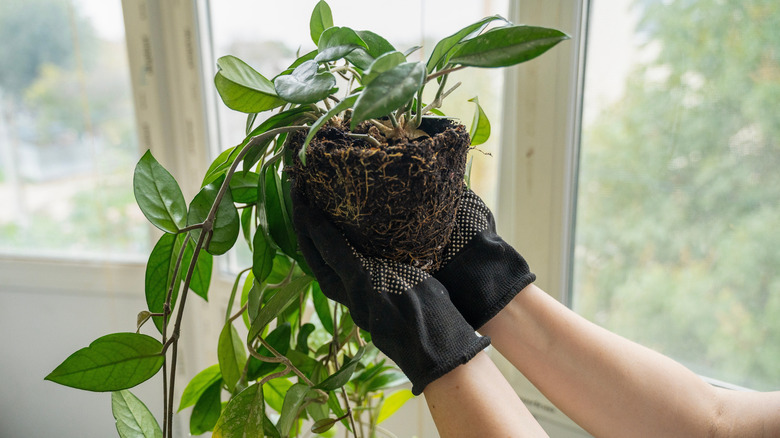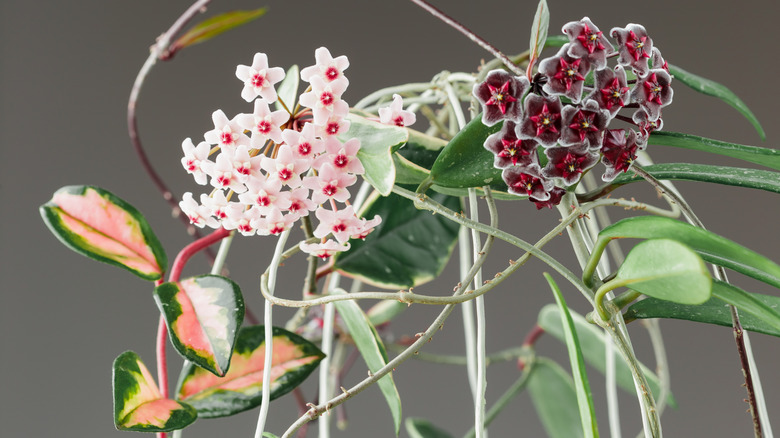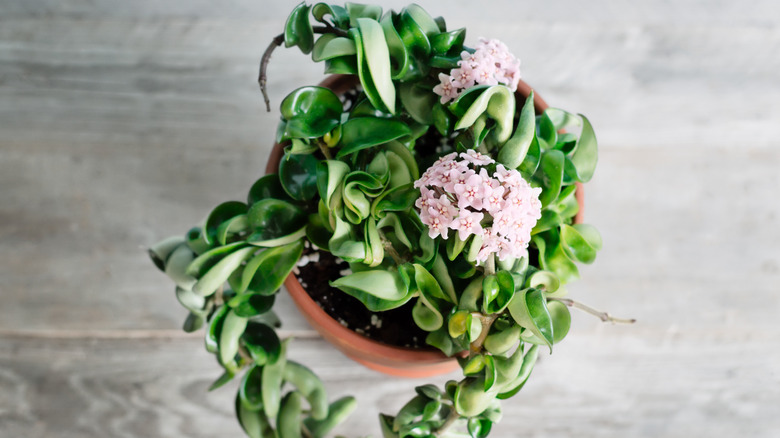Get All-Natural Scents In Your Home By Growing Different Kinds Of Hoya
A fresh-smelling home creates a welcoming atmosphere for visitors to step into. But room sprays and scented wall plug-ins can overpower an indoor space; and, they contain chemicals. Growing aromatic plants instead is an all-natural way to make your home smell better than ever. When shopping around for your next house plant, choosing one with more fragrant flowers can help you achieve a wonderful-smelling home without relying on ingredients that are doing more harm than good.
The houseplant hoya (Hoya spp.) has sweet-smelling flowers and lush, trailing vines that make them a popular choice for plant lovers. Hoyas come in many varieties, each with unique blooms and scents. From dessert-like aromas of toffee and vanilla to earthy, floral fragrances like jasmine and musk, hoya plants are versatile and can match your personal taste.
In general, hoya plants are low maintenance and easy to care for, but some varieties require a little extra love. Luckily, many hoya varieties not only smell incredible but are suitable for beginner gardeners to grow. Here are some of the most popular types of hoya plants and how to care for them.
The different varieties of hoya plants
Hoya is sometimes called "wax vines," a nod to the genus' tropical succulent characteristics — namely its waxy leaves. Deciding which hoya variety to grow in your home may seem daunting, but choosing an aroma that aligns with your personal preferences can be a good place to start. For example, varieties like Hoya cumingiana and Hoya pandurata produce flowers with lightly spicy scents that are warm and complex. For intense honey aromas, opt for varieties like Hoya nummularioides or Hoya exilis, which are sweet and potent.
If you prefer more traditional, floral smells, Hoya shepherdii has flowers with intense, perfumy aromas, while Hoya lacunosa smells like jasmine. Some hoya plants smell brighter; for example, Hoya linearis smells like lemons, while Hoya odorata omits aromas of fresh citrus. Some varieties even smell like mouthwatering desserts — take, for example, Hoya burtoniae's signature toffee scent or the rich chocolate smell of Hoya nervosa.
Whether you're looking to make your kitchen smell like a gourmet bakery, or uplift your home's atmosphere with clean, bright scents, there's probably a hoya variety for you. With adequate nurturing and plenty of sunlight, some species of hoya plants will continue to produce bountiful blooms frequently. Here is how to grow and care for hoya climbing vines for optimal amounts of foliage and fragrant flowers.
Caring for your hoya plants
Plenty of hoya varieties are easy to grow even if you don't have a "green thumb." Most hoya plants are content in pots or hanging baskets, where their long vines can drape off the edge. They love sunny, bright rooms and thrive in ample amounts of indirect sunlight. Hoya plants like damp but not overly wet soil with good drainage and regular waterings. Hoya plants with thicker, more succulent-like leaves need less frequent watering than thinner-leaved varieties. They also don't mind being housed in smaller pots.
Most hoya varieties are considered low maintenance, but some are more demanding more than others, making them less ideal for beginners. Species with thinner, more fragile, or fuzzy foliage — like Hoya linearis — are generally more difficult to care for. Beginner-friendly varieties like Hoya multiflora bloom early and frequently and give off an herbaceous, lemony smell. Hoya obovata is another popular choice, as it's extremely easy to grow and produces pink and red flowers that smell clean and floral, like roses.
These easy-to-care-for varieties are still fragrant enough to fill your home. If you're looking to ditch the toxic ingredients in artificial fragrances and choose a more natural, purifying approach, hoya plants could be the perfect fit. These stunning and aromatic plants can thrive with minimal care and keep your home smelling fresh from room to room.


